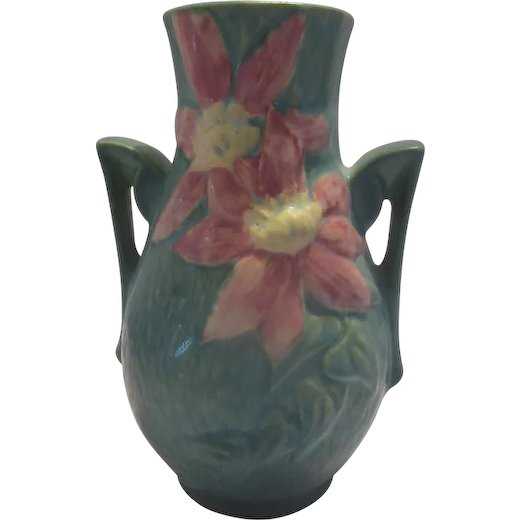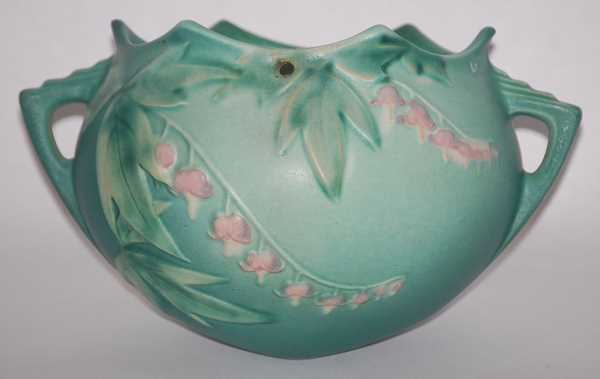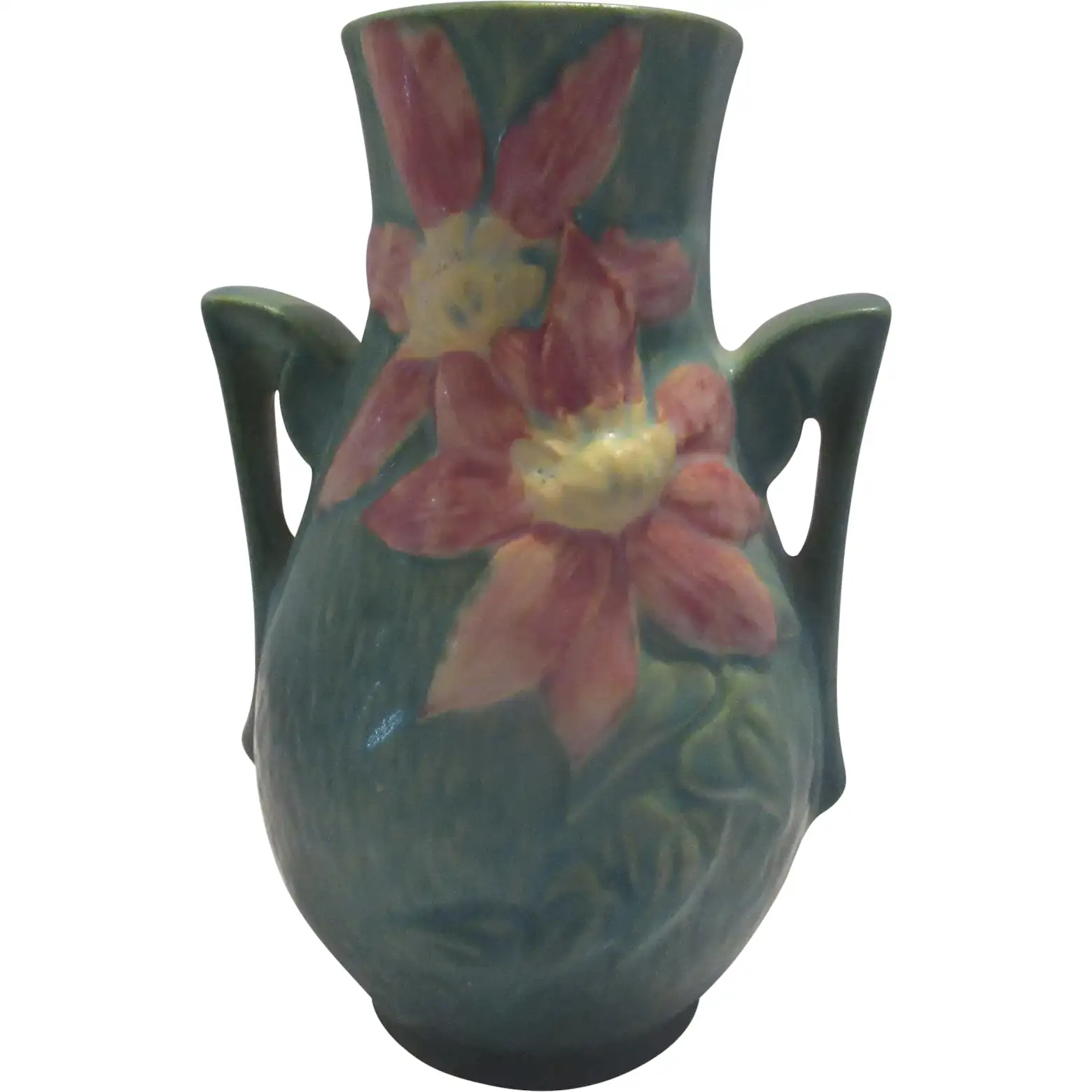The booming popularity of collecting vintage pottery has led to an increased demand for pieces from well-known manufacturers. One such manufacturer is Roseville Pottery, which produced beautiful ceramic pieces from the late 19th century to the mid-20th century. However, the rising demand has also given rise to a market for reproductions and fakes posing as genuine Roseville pieces. This article aims to provide helpful tips for collectors on how to identify authentic Roseville pottery and avoid falling victim to scams.
When it comes to identifying genuine Roseville pottery, one of the first things to consider is the craftsmanship. Roseville pieces were known for their high-quality workmanship and attention to detail. Genuine pieces often display intricate designs, crisp mold marks, and smooth glazing. The artists at Roseville were skilled in their craft, and this is evident in the fine detailing and overall aesthetic appeal of their pottery.
Another key aspect to look for when examining Roseville pottery is the glaze. Genuine Roseville pieces typically have unique glaze colors and textures that were specific to the company. The glazes were carefully formulated and applied, resulting in vibrant and distinctive finishes. Reproductions, on the other hand, may have inconsistent glaze colors, drips, or uneven coverage, indicating a lower quality reproduction.
In addition to craftsmanship and glaze, the markings on the pottery can also provide clues to its authenticity. Genuine Roseville pieces often have the Roseville stamp or raised lettering on the bottom, indicating the maker’s mark. These markings can vary depending on the time period and style of the piece, so it’s important to familiarize yourself with the different marks used by Roseville throughout its production history. Reproductions may have poorly executed or inaccurate markings, making them easier to identify.
By being knowledgeable about the craftsmanship, glaze, and markings of genuine Roseville pottery, collectors can confidently navigate the market and avoid purchasing reproductions. Remember to do thorough research, consult reputable sources, and seek expert opinions when in doubt. With these tips in mind, collectors can continue to appreciate and preserve the rich history of Roseville pottery.
Has Roseville Pottery Been Reproduced?
Roseville Pottery is a highly sought-after collectible due to its artistic design and historical significance. Unfortunately, like many valuable items, it has been reproduced over the years. Reproductions can be deceptive, but there are some key factors to consider when determining if a piece is genuine or a fake.
- Quality: Genuine Roseville Pottery is known for its high-quality craftsmanship and attention to detail. Reproductions often lack the same level of quality and may have imperfections or sloppy workmanship.
- Pattern Variations: Roseville Pottery has a wide variety of patterns and designs. If a piece claims to be a rare or previously undocumented pattern, be skeptical. Researching the known patterns can help identify any suspicious variations.
- Colors and Glazes: The colors and glazes used on genuine Roseville Pottery are carefully chosen and consistent. Reproductions may have inconsistencies in the colors or glazes, or may use colors not found in authentic pieces.
- Backstamps and Markings: Genuine Roseville Pottery often has distinct backstamps or markings indicating the manufacturer and pattern. Reproductions may have inaccurately stamped or missing markings.
- Price: If a piece of Roseville Pottery seems too good to be true in terms of price, it likely is. Genuine pieces can be quite valuable, so be cautious of unusually low prices.
It is important to note that not all reproductions of Roseville Pottery are intended to deceive. Many companies have reproduced Roseville designs to honor the original style. However, these reproductions are usually marked differently or have slight variations to differentiate them from the original pieces.
If you are unsure about the authenticity of a piece of Roseville Pottery, it is always best to consult with an expert or experienced collector. They can provide valuable insight and help determine if the piece is genuine or a reproduction.
Distinctive Characteristics of Genuine Roseville Pottery
Genuine Roseville Pottery, produced from 1890 to 1954, has several distinctive characteristics that can help identify its authenticity:
- High-quality craftsmanship: Genuine Roseville pieces were meticulously crafted with attention to detail. The pottery often features intricate hand-painted designs and textured surfaces.
- Distinctive shapes and forms: Roseville is known for its wide range of unique shapes and forms, including vases, bowls, jardinieres, and wall pockets. The designs often feature organic motifs inspired by nature, such as floral patterns and leaf motifs.
- Rich and vibrant glazes: Roseville Pottery is renowned for its beautiful glazes, which were carefully applied to enhance the visual appeal of each piece. Genuine Roseville glazes can range from soft pastels to bold and vibrant colors.
- Markings and stamps: Authentic Roseville pieces are usually marked with the Roseville name or logo, along with a shape number. These markings are typically found on the base or bottom of the pottery. The marks should be clear and distinct, not blurry or faded.
- Consistent quality: Genuine Roseville Pottery exhibits a consistent level of quality throughout its production period. The pieces are well-made and durable, with smooth surfaces and even glazing.
- Patterns and collections: Roseville Pottery often produced collections of several pieces featuring the same design or pattern. Look for matching designs or patterns to identify genuine Roseville sets.
- Comparable prices: While pricing can vary depending on factors such as rarity and condition, genuine Roseville pieces generally command higher prices than reproductions or fakes. Researching current market values can help determine if a piece is genuine.
By familiarizing yourself with these distinctive characteristics, you can better identify genuine Roseville Pottery and avoid purchasing reproductions or fakes.
Common Reproduction Techniques
As with many collectible items, Roseville pottery has been reproduced over the years. It’s important for collectors to be aware of these reproduction techniques and know how to differentiate between genuine and fake pieces. Here are some common reproduction techniques that have been used:
- Mold-Casting: Reproducers would create molds from genuine Roseville pieces and use them to cast new pieces. This technique allows for the production of multiple identical pieces, making it difficult to distinguish between the original and the reproduction.
- Evidence of Machinery: Genuine Roseville pottery was typically made by hand, so any signs of machinery in the production process should raise concerns. Look for perfectly symmetrical lines or patterns, as well as perfectly uniform glazing, which could indicate a reproduction.
- Impression Marks: Reproductions often have distinct impression marks that are different from genuine pieces. These marks may appear clumsy, uneven, or poorly defined, whereas genuine Roseville pottery tends to have smooth, clean, and clearly defined impressions.
- Inconsistent Quality: Reproductions may exhibit inconsistent quality, such as uneven glazing, rough edges, or imperfect shape. Genuine Roseville pottery typically showcases high-quality craftsmanship and attention to detail.
- Incorrect Colors or Patterns: Some reproducers may get the colors or patterns wrong when attempting to mimic genuine Roseville pieces. Familiarize yourself with the authentic color palettes and patterns used by Roseville pottery to better spot any discrepancies.
When collecting Roseville pottery, it is recommended to educate yourself on the authentic characteristics of genuine pieces, consult reputable references, and purchase from trusted sources. By being knowledgeable about common reproduction techniques, you can confidently identify genuine Roseville pottery and avoid purchasing fakes.
Tips for Identifying Genuine Roseville Pieces
Roseville Pottery is highly collectible, and it is important to be able to distinguish genuine pieces from reproductions. Here are some tips to help you identify whether a Roseville piece is authentic:
- Look for the Roseville mark: Genuine Roseville pieces will have a clear and distinct Roseville mark on the bottom. This mark will typically include the word “Roseville” along with the shape number and/or pattern name. The mark should be well-defined and not blurry or unclear.
- Study the pattern: Familiarize yourself with the different patterns produced by Roseville Pottery. Each pattern has its own unique characteristics and design elements. Look for consistent details and patterns within the piece that match known Roseville patterns.
- Inspect the glaze: Roseville Pottery is known for its high-quality and vibrant glazes. Genuine pieces will have a smooth and even glaze, with no signs of drips, rough spots, or inconsistencies. The glaze should also be evenly applied to the entire piece.
- Check for signs of age: Examine the piece for any signs of wear, such as crazing, scratches, or chips. Genuine Roseville pottery will often show signs of age, but in a way that is consistent with the time period it was produced in. Be wary of pieces that appear too new or pristine.
- Compare with reference materials: Use reference books, online resources, and reputable dealers to compare your piece with known examples of genuine Roseville pottery. Pay attention to details such as shape, color, and markings to ensure authenticity.
- Beware of common reproductions: There are several known reproductions of Roseville Pottery, particularly for popular patterns. Educate yourself about these reproductions and be cautious when purchasing pieces that may be suspect.
- Consult with experts: If you are uncertain about the authenticity of a piece, consider seeking the opinion of a reputable pottery expert or dealer. They can provide valuable insights and help authenticate your Roseville pottery.
By following these tips and gaining knowledge about genuine Roseville Pottery, you can confidently identify and collect authentic pieces with confidence.
Factors That Affect Value
- Condition: The condition of a Roseville piece is a significant factor when determining its value. Pieces that are in excellent condition, without any cracks, chips, or repairs, are typically more sought after and valuable.
- Rarity: The rarity of a particular Roseville design or pattern can greatly affect its value. Limited edition or discontinued designs are often more valuable, as they are harder to find.
- Age: Generally, older pieces of Roseville pottery tend to be more valuable than newer ones. This is because the pottery has become collectible over time, and older pieces may be more difficult to find.
- Design: Certain Roseville designs or patterns are more desirable and sought after by collectors, which can drive up their value. Designs that are unique, intricate, or especially aesthetically pleasing tend to be more valuable.
- Size: Larger Roseville pieces are usually more valuable than smaller ones. This is because larger pieces require more clay and are often more intricate, making them rarer and more desirable to collectors.
- Markings: Authentic Roseville pieces are typically marked with a distinctive stamp or signature on the bottom. The presence of these markings can affect the value of a piece, as collectors often prefer pieces that are clearly identified as Roseville pottery.
In conclusion, when determining the value of a Roseville piece, factors such as condition, rarity, age, design, size, and markings should all be taken into consideration. By carefully examining these factors, collectors and enthusiasts can make more informed judgments about the value and authenticity of Roseville pottery.
How to Avoid Buying Reproductions
When purchasing Roseville pottery, it is important to be able to identify genuine pieces and avoid buying reproductions. Here are some tips to help you ensure that you are buying authentic Roseville pottery:
- Research and educate yourself: Familiarize yourself with the various patterns, shapes, and marks used by Roseville pottery. This will help you spot any inconsistencies or discrepancies in the piece you are considering buying.
- Buy from reputable sellers: Purchase from trusted sources such as reputable antique dealers, auction houses, or established online marketplaces. These sellers are more likely to have verified authentic Roseville pottery.
- Examine the piece: Thoroughly inspect the pottery for any signs of wear, damage, or repairs. Genuine Roseville pieces are likely to show some signs of age, while reproductions may appear newer or have irregularities in the glaze or shape.
- Check the markings: Look for original Roseville markings, such as the raised “Roseville” name or the impressed marks, which can vary depending on the time period and line of pottery. Compare these markings to authentic examples to ensure they match.
- Consult reference books or online resources: Use reference books or online resources that provide detailed information and images of authentic Roseville pottery. These resources can help you identify specific patterns, shapes, and marks to look for.
- Ask for provenance: If possible, ask the seller for any provenance or documentation that can confirm the authenticity of the Roseville piece. This can include receipts, certificates of authenticity, or any historical information about the piece’s origin.
- Trust your instincts: If something feels off or too good to be true, trust your instincts. If a deal seems too good or the seller is unable to provide sufficient information, it may be a sign that the piece is not genuine.
By following these tips and being vigilant, you can increase your chances of purchasing authentic Roseville pottery and avoid buying reproductions. Remember that genuine Roseville pieces can be valuable and highly sought after, so it is important to take the time to ensure their authenticity before making a purchase.
Expert Advice and Resources for Verification
When it comes to identifying genuine Roseville pottery, it is always best to consult with experts and utilize reliable resources to ensure accuracy. Here are some expert tips and resources to help verify the authenticity of your Roseville pieces:
- Specialists and Appraisers: Seek out specialists and appraisers who have extensive knowledge and experience in identifying Roseville pottery. They can provide expert opinions and evaluations based on factors such as markings, patterns, glazes, and overall quality.
- Reference Books: Invest in reference books specifically dedicated to Roseville pottery. These books often include detailed information, photographs, and descriptions of genuine Roseville pieces, as well as guidance on identifying reproductions and fakes.
- Online Communities and Forums: Participate in online communities and forums for Roseville pottery collectors. These platforms provide opportunities to interact with knowledgeable collectors and enthusiasts who can offer valuable insights and advice about different Roseville lines, markings, and authenticity.
- Museum Collections: Visit museums that have collections of Roseville pottery. Seeing authentic pieces up close can help train your eye to recognize the unique characteristics and craftsmanship that distinguish genuine Roseville pottery from imitations.
- Authentication Services: In some cases, you may consider utilizing professional authentication services for a thorough evaluation of your Roseville pottery. These services employ experts who can examine your pieces in person to determine their authenticity.
- Online Research: Conduct online research to gather information about Roseville pottery and familiarize yourself with its various lines, patterns, and markings. Look for reputable websites, articles, and blogs that provide reliable information and guidelines for identifying genuine pieces.
By combining these expert resources and advice, you can enhance your knowledge and skills in verifying the authenticity of Roseville pottery. Remember to be diligent, exercise caution, and continue learning to become a more confident collector.
FAQ:
How can I tell if my Roseville pottery is genuine?
Genuine Roseville pottery will have a clear mark on the bottom indicating it was made by Roseville. Look for the Roseville name or symbol.
What are some common signs that Roseville pottery has been reproduced?
Some common signs of reproduction include poor craftsmanship, inconsistent glazing, and inaccuracies in the design or shape of the piece. Additionally, if the mark on the bottom of the piece is not clear or appears to have been altered, it may be a reproduction.
Are there specific Roseville patterns that are more commonly reproduced?
Yes, certain patterns such as Pinecone, Rozane, and Sunflower are often targeted by reproductions. If you have a piece in one of these patterns, be sure to examine it closely for signs of reproduction.
How can I educate myself on the different patterns of Roseville pottery?
There are several resources available to help you learn about the different patterns of Roseville pottery. You can find books, online guides, and even collector’s clubs that specialize in Roseville. Take advantage of these resources to become familiar with the characteristics of genuine pieces.
What should I do if I suspect my Roseville pottery is a reproduction?
If you have concerns about the authenticity of your Roseville pottery, it is best to consult an expert or appraiser. They will be able to evaluate the piece and give you a professional opinion on its authenticity.
Can reproductions of Roseville pottery still be valuable?
While reproductions of Roseville pottery may not have the same value as genuine pieces, there are collectors who still appreciate the beauty and craftsmanship of reproductions. However, it is important to be aware of the difference in value between a genuine piece and a reproduction if you are buying or selling.
What steps can I take to protect myself from buying a reproduction?
When buying Roseville pottery, it is important to buy from a reputable dealer or source. Do your research on the seller and ask questions about the piece’s authenticity. Additionally, familiarize yourself with the characteristics of genuine Roseville pottery so you can spot any potential reproductions.


